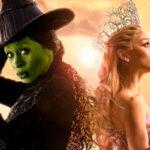

Released in 1984, “Gremlins” quickly became an instant classic, masterfully blending comedy, horror, and fantasy into a captivating plot. Directed by Joe Dante and produced by Steven Spielberg, the film tells the story of a small monster named Gizmo, whose presence triggers a series of events that transform a quiet American town into absolute chaos.
Besides its original plot and memorable characters, “Gremlins” is known for its innovative special effects and its impact on the monster movie genre. This text explores some fascinating trivia about the production and cultural impact of this iconic film.
Get ready to uncover unexpected details about how the Gremlins came to life, the film’s lasting impact, and behind-the-scenes curiosities that highlight its status as a true landmark in cinema history.
1 – THE MEANING OF THE NAMES
In the film, Gremlins appear as the malevolent versions of Mogwai. While Gremlins are mischievous and dangerous creatures, Mogwai are cute and furry, like Gizmo, as long as they follow the three essential rules of their species.
However, if the Peltzers had known Cantonese, they would never have bought a Mogwai. This is because “Mogwai” in Cantonese means “Demon.”
2 – THE SAME CITY AS ANOTHER 80s CLASSIC
“Gremlins” is set in the fictional town of Kingston Falls, which hoped for a peaceful and joyful Christmas but ended up being devastated by the vandalism and murders caused by the mischievous monsters.
The most interesting detail is that this same town is also known as Hill Valley, the setting for all three “Back to the Future” films. Since both franchises were filmed almost simultaneously, the producers decided to reuse the same location for both productions.
3 – TRIBUTE TO SPIELBERG
Steven Spielberg served as executive producer for both “Gremlins” and “Back to the Future”, and the reuse of sets ended up being an unintentional tribute to him. Additionally, the film includes two clear references to the director.
The town’s radio host, “Rockn’ Rocky Rialto”, has a billboard that replicates the poster for “Raiders of the Lost Ark”, and at the end of the film, in a toy store, you can spot a plush toy of “E.T. the Extra-Terrestrial”, both directed by Spielberg. There is also a brief cameo by Spielberg at the technology convention that Mr. Peltzer attends; he is briefly seen driving a little car.
4 – ALMOST DIRECTED BY TIM BURTON
The film is one of the biggest successes of Joe Dante’s career, known for his imaginative and often politically incorrect humor.
However, this choice almost didn’t happen, as Steven Spielberg’s initial idea was to invite a young director named Tim Burton. At the time, Spielberg was impressed by Burton’s gothic shorts, but since he had not yet directed a feature film, Spielberg decided not to risk entrusting such a large project to a newcomer.
5 – MONKEYS DRESSED AS GREMLINS?
Here’s a curiosity as peculiar as the film itself. Initially, the idea for the Gremlins was for them to display more chaotic behavior, similar to wild animals. To achieve this, the team tried using monkeys dressed in Gremlin costumes. However, the animals became terrified when they attempted to put the masks on them, leading the team to abandon this approach.
6 – CARING FOR THE GREMLIN ROBOTS
With the idea of using monkeys discarded and CGI still in development, the solution for creating the Gremlins was to use animatronics. The team obtained robotic puppets, each costing between US$ 30,000 and US$ 40,000.
Despite their limited movement, these animatronics were a big hit during filming. The enthusiasm was so great that the team had to hire security to check everyone’s trunks at the end of the day to ensure that no one was taking a Gremlin home.
7 – THE PUPPET WAS FULL OF DEFECTS
Despite being the star of the film and adored by fans, including children who were deeply affected by the movie, the small Gizmo was extremely unpopular among the production team. The reason was that, being a small robot, it frequently malfunctioned, causing delays in filming and wasting the team’s time.
These issues led to a list of pranks the crew wanted to pull on the poor puppet. To “ease the tension”, the director decided to include a scene where the Gremlins pin Gizmo to a wall and use him as a target for several darts.
8 – DISTURBING SCENES WERE CUT
One of the main points of contention among Warner executives at the time was whether the film should be classified as a horror movie. The guidance given to the creative team was to approach the film as a production aimed at a younger audience but still suitable for older children.
As a result, screenwriter Chris Columbus had to cut some scenes from the original version, including the death of the puppy and the decapitation of Billy’s mother, who would be killed by a Gremlin and have her head kicked down the stairs.
9 – AN IMPORTANT SCENE ALMOST DIDN’T MAKE IT
At the end of the film, there is a scene where Kate (Phoebe Cates) reveals that she hates Christmas because, when she was a child, her father dressed up as Santa Claus to surprise her but ended up slipping, breaking his neck, and getting stuck in the chimney.
Although it is a heavy sequence, it has a touch of politically incorrect humor. Warner tried to remove this scene, but Dante insisted on keeping it, arguing that it perfectly captured the essence of the film.
10 THE FIFTH HIGHEST-GROSSING FILM OF 1984
The year 1984 was marked by several classics of the decade and pop culture in general, but one case in particular stands out: Gremlins premiered in U.S. theaters on the same day as Ghostbusters.
However, the little monsters couldn’t compete on equal footing, as Ghostbusters ended the year as the third-highest-grossing film of 1984, bringing in nearly $300 million. In contrast, Gremlins ranked fifth at the box office, with just over $150 million.
In conclusion, Gremlins is not just a milestone in 80s cinema history but also a fascinating example of how creativity and innovation can turn an original idea into a timeless classic. The film, with its unique blend of comedy, horror, and fantasy, continues to captivate and surprise new generations of viewers.
The revealed behind-the-scenes facts highlight the dedication and ingenuity of the production team, from the choice of animatronics to the bold creative decisions that shaped the film. Moreover, the interaction between Gremlins and other major productions of the time, like Ghostbusters, illustrates the competitive and vibrant context of cinema during that decade.
Revisiting these insights allows us to further appreciate the lasting impact and legacy of Gremlins, which continues to influence and entertain, solidifying its place in pop culture.








